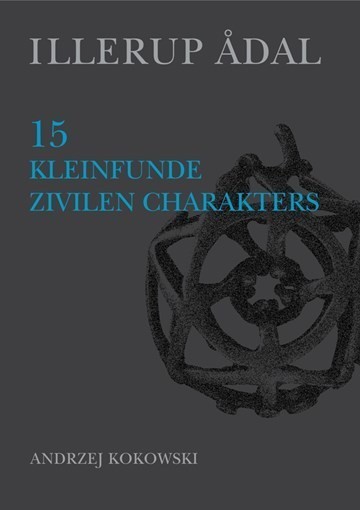
Format: Hardback
Pages: 235
ISBN: 9788793423398
Pub Date: 01 Dec 2019
Illustrations: Illustrations, black and white
Description:
Illerup vol. 15 is the last volume in the many publications about the sacrificial weapons find by Danish Illerup Ådal from the late Iron Age. This volume is about the many non-military finds, such as dice for board games, beads, jewellery, amulets, etc.
– things that the soldiers have worn as jewellery around their necks, or in purses on their belts. These items therefore give a unique insight into the soldiers’ everyday lives, their appearance and identity.
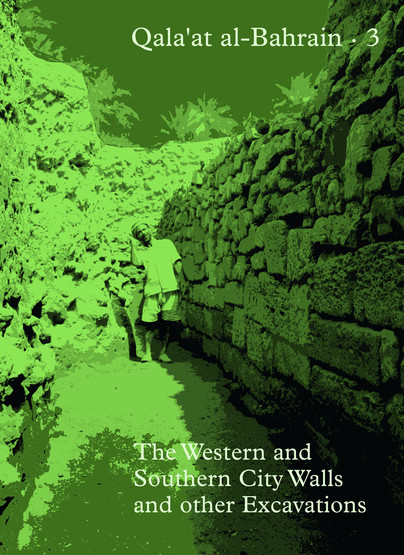
Format: Hardback
Pages: 213
ISBN: 9788793423282
Pub Date: 01 Dec 2019
Description:
The capital of ancient Dilmun, Qala’at al-Bahrain, the most important archaeological site in East Arabia, was excavated in 1954-1978 by a Danish expedition from Moesgaard Museum. The first two volumes were published in 1994 and 1997, dealing with the northern city wall, the Islamic fortress and the central monumental buildings. The third volume covers the remaining 13 excavations, presenting their architectures and stratigraphies.
A detailed treatment of the finds is given, stamp seals, inscriptions, figurines, incense burners, human bones, pottery, etc., dating from the late 3rd millennium to the Islamic period.

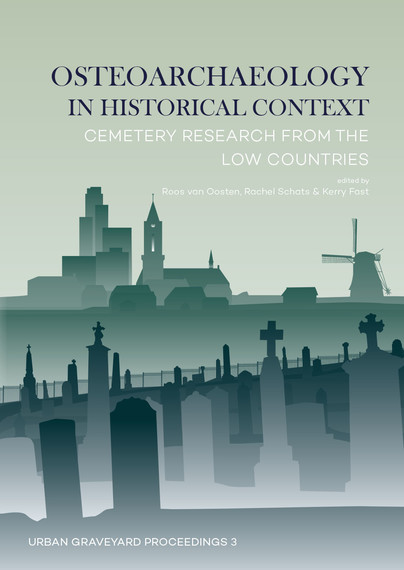
Pages: 206
ISBN: 9789088908347
Pub Date: 26 Nov 2019
Series: Urban Graveyard Proceedings
Illustrations: 26fc/68bw
Pages: 206
ISBN: 9789088908330
Pub Date: 26 Nov 2019
Series: Urban Graveyard Proceedings
Illustrations: 26fc/68bw
Description:
Osteoarchaeology is a rich field for reconstructing past lives in that it can provide details on sex, age-at-death, stature, and pathology in conjunction with the cultural, social, and economic aspects of the person’s environment and burial conditions. While osteoarchaeological research is common in the Low Countries, many of the studies done on the excellent skeletal collections remain unpublished and therefore unavailable to a larger audience. Following on the Urban Graveyards volumes, Osteoarchaeology in Historical Context contributes to the dissemination of cemetery research in the Low Countries.
Several important skeletal collections are examined in their historical contexts to better understand past living and dying. Osteoarchaeological data are combined with information on burial location, orientation, and grave goods. In doing so, this volume expands our knowledge of contextual cemetery research in the Low Countries and serves as a starting point for comparative research.
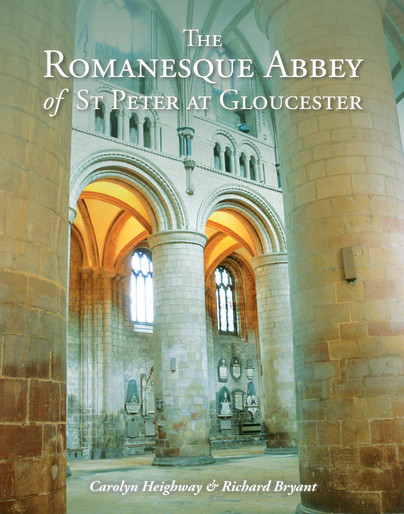
Format: Paperback
Pages: 128
ISBN: 9781789254143
Pub Date: 15 Nov 2019
Illustrations: Colour illustratons
Description:
This book was inspired by the records made by Carolyn Heighway during the thirty years when she was archaeological consultant at Gloucester Cathedral. The survival of so much of the abbey of 1089 is remarkable, and often not appreciated by the casual visitor since it is ingeniously overlaid by Gothic alterations. Since 2000, surveys have been produced which enable accurate plans and elevations to be made which clarify the late 11th and early 12th century appearance of the building; deductions have also been made from archaeological observations.
Since there are almost no documents for the abbey before the 15th century which relate to construction matters, the building itself is primary evidence, and archaeology is an important element. The book is lavishly illustrated with photographs, plans and measured drawings including accurate reconstructions; comparative scale plans of Worcester and Tewkesbury are also included. The late 11th-12th century church is described in detail, along with the surviving claustral buildings. There is a chapter on polychromy and on the surviving 11th-12th century sculpture, and a full bibliography. The whole is set in context by Malcolm Thurlby, who comments on the wider sources and associations.
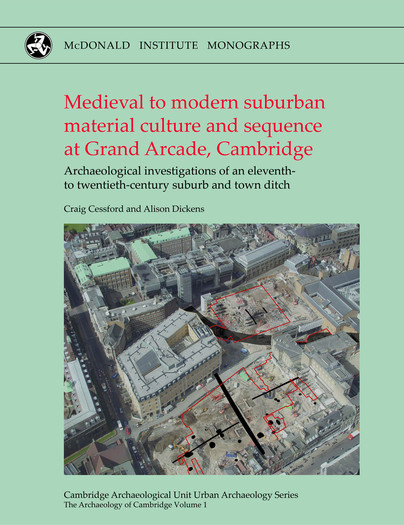
Format: Hardback
Pages: 495
ISBN: 9781902937786
Pub Date: 31 Oct 2019
Series: Cambridge Archaeological Unit Urban Archaeology Series
Description:
This is the first volume describing the results of the CAUs excavations in Cambridge and it is also the first monograph ever published on the archaeology of the town. At 1.5 hectares the Grand Arcade investigations represent the largest archaeological excavation ever undertaken in Cambridge, significantly enhanced by detailed standing building recording and documentary research.
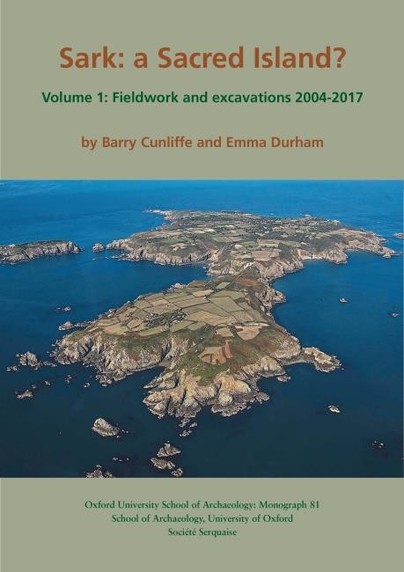
Format: Hardback
Pages: 280
ISBN: 9781905905461
Pub Date: 31 Oct 2019
Series: Oxford University School of Archaeology Monograph
Illustrations: b/w and colour
Description:
Sark came briefly to prominence in 1719 when the Sark hoard was found – a pot containing Gaulish coins and embossed silver plaques. It was brought to England and disappeared. The Archaeological Survey of Sark began in 2004 with a view to studying the island in the context of Atlantic maritime networks to explore the themes of remoteness and connectivity.
Fieldwork organized through the School of Archaeology, University of Oxford has been carried out annually and continues. A complete gazetteer of nearly 100 sites has been compiled together with a full listing of all the artefacts recovered. Notable are the large number of Neolithic stone axes, many made from the local dolerite, and the widespread use of local serpentine to make amulets Sark: a sacred island contains full reports on eight archaeological excavations including details of an early Neolithic settlement, a middle Neolithic ritual site, a Beaker cist burial a Mid–Late Bronze Age settlement, a Gallo-Roman ritual site (from which the Sark hoard came) and an early Medieval farm. Results of surveys of a Dark Age monastery and 16th century French fortifications are also given.
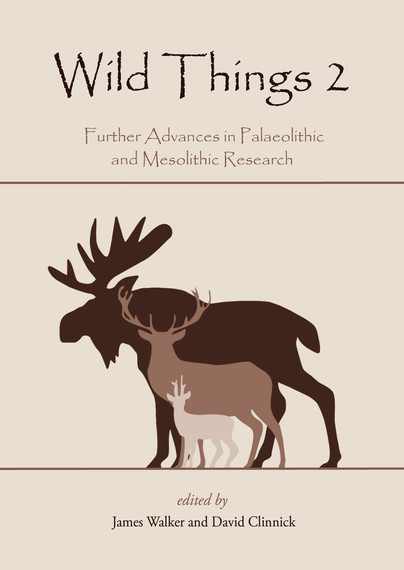
Format: Paperback
Pages: 208
ISBN: 9781785709463
Pub Date: 31 Oct 2019
Description:
Building on the first Wild Things volume (Oxbow Books 2014) which aimed to showcase the research putting archaeologists researching the Palaeolithic and Mesolithic at the cutting edge of understanding humanity’s past, this collection of contributions presents recent research from an international group of both early career and established scientists.Covering aspects of both Palaeolithic and Mesolithic research in order to encourage dialogue between practitioners of archaeology of both periods, contributions are also geographically diverse, touching on British, European, North American and Asian archaeology. Topics covered include transitional periods, deer and people, stone tool technologies, pottery, land-use, antler frontlets, and the development of prehistoric archaeology an 'age of wonder'.
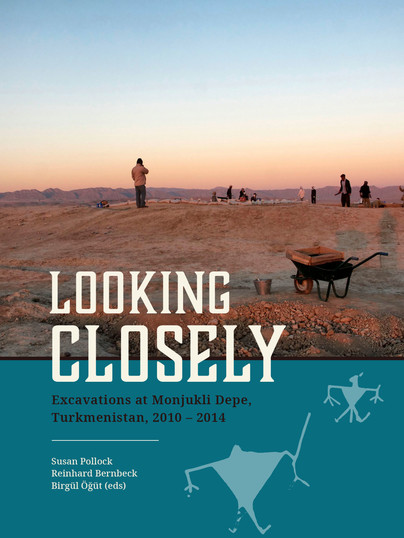
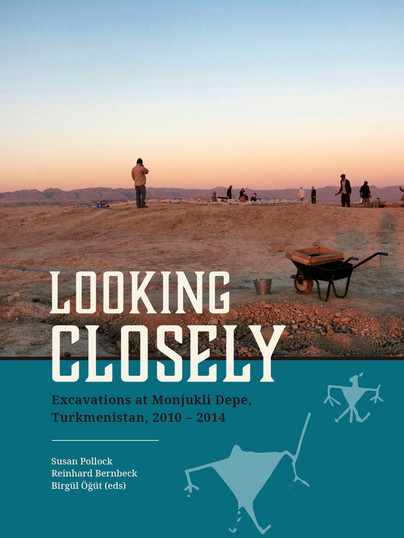
Pages: 500
ISBN: 9789088907678
Pub Date: 10 Oct 2019
Illustrations: 195fc/117bw
Pages: 500
ISBN: 9789088907654
Pub Date: 10 Oct 2019
Illustrations: 195fc/117bw
Description:
Soviet archaeological research in southern Turkmenistan revealed a series of small Late Neolithic and Aeneolithic villages strung along the streams that emerge from the Kopet Dag and water the narrow foothill zone separating the mountains from the Kara Kum desert. A commonly accepted premise of their work was that these communities garnered their technological knowledge if not their populations from regions to the south and west in present-day Iran.Since 2010 we have reinvestigated one of these sites, the small Late Neolithic (ca.
6200-5600 BCE) and early Aeneolithic (ca. 4800-4350 BCE) village of Monjukli Depe. Our research examines microhistories of cultural techniques as a source of insights into long-term and spatially extensive change as well as internal variations and similarities in material practices. This volume presents results of this work. A Bayesian modeling of 14C dates demonstrates a long hiatus between the Neolithic and Aeneolithic strata of the site as well as a hitherto unattested very early Aeneolithic phase (“Meana Horizon”). A sequence of densely built, well preserved Aeneolithic houses exhibits marked similarities to earlier Neolithic architecture in the region. Despite overall standardized plans, the houses reveal significant variations in internal features and practices. Similar flexibility within a set of common dispositions is evident in burial practices. Very limited quantities of pottery offer a stark contrast to the frequent occurrence of spindle whorls, indicating a substantial production of thread, and to a large and varied assemblage of clay tokens. A wide variety of fire installations attests to routinized handling of fire, which did not prevent at least one building from succumbing to a conflagration. Animal herding was heavily based on sheep and goats, while cattle figured prominently in feasts. The Meana tradition at Monjukli Depe exhibits significant structural similarities to other early village societies in Western Asia and will make this volume of interest to scholars working on similar times and contexts.
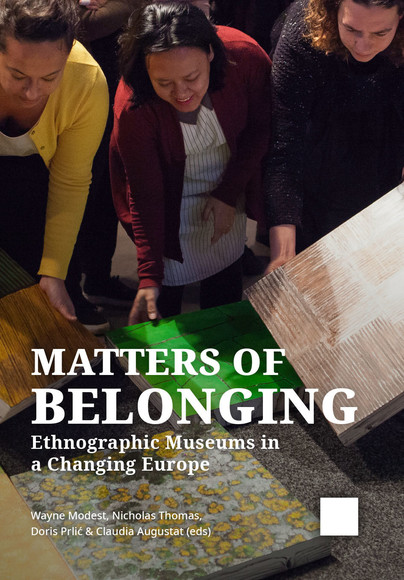
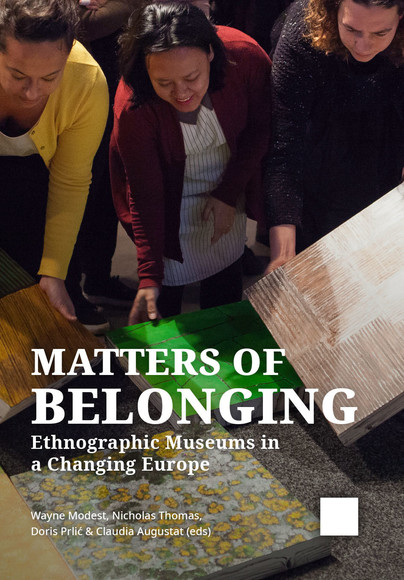
Pages: 150
ISBN: 9789088907784
Pub Date: 10 Oct 2019
Illustrations: 25fc/16bw
Pages: 150
ISBN: 9789088907777
Pub Date: 10 Oct 2019
Illustrations: 25fc/16bw
Description:
Matters of Belonging foregrounds critical practices within ethnographic museums in relation to their diverse stakeholders, with a special focus on collaboration with artists and differently constituted, self-identified communities. The book emerges from the EU-funded project SWICH (Sharing a World of Inclusion, Creativity and Heritage) that places ethnographic museums at the centre of ongoing debates about Europe’s shifting polity and questions around heritage, citizenship and belonging. Addressing diverse political climates and citizenship regimes, legal frameworks and colonial/migratory histories, the articles seek to question the role of ethnographic and world cultures museums within contemporary negotiations of how to define Europe, Europeans, and European heritage, especially mindful of the region’s colonial and migratory pasts.
The book is neither celebratory nor congratulatory, and does not depict a triumphal overcoming by ethnographic museums of their troubled pasts. Its aim is to think critically about these museums’ responses, to identify both pitfalls and positive developments, and to sketch out possible futures for museums generally, and ethnographic museums specifically, as they try to locate themselves within discussions about Europe and its futures. Core to the book’s argument is that it may exactly be in their entanglement with the colonial past that these museums can become important sites for thinking about colonial entailments in the present. Facing up to this past is the beginning of addressing these larger legacies. The authors suggest that the ethnographic museum has been the site not just for trenchant questioning of colonial durabilities in contemporary Europe, but also for the development of new practices – of collaboration and authority-sharing, of recognition and belonging. The book explores these models, not as complete, but as a starting point to push forward new practices.
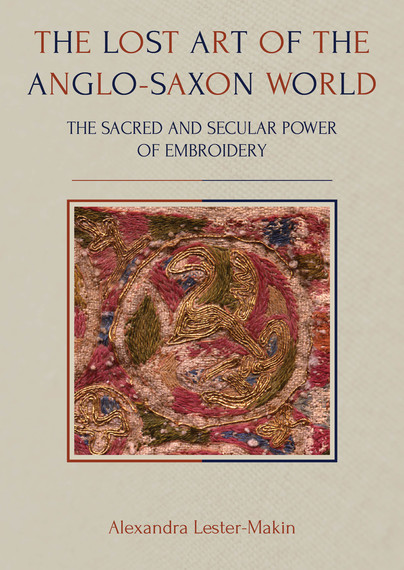
Format: Paperback
Pages: 256
ISBN: 9781789251449
Pub Date: 30 Sep 2019
Illustrations: b/w and colour
Description:
This latest title in the highly successful Ancient Textiles series is the first substantial monograph-length historiography of early medieval embroideries and their context within the British Isles. The book brings together and analyses for the first time all 43 embroideries believed to have been made in the British Isles and Ireland in the early medieval period. New research carried out on those embroideries that are accessible today, involving the collection of technical data, stitch analysis, observations of condition and wear-marks and microscopic photography supplements a survey of existing published and archival sources.
The research has been used to write, for the first time, the ‘story’ of embroidery, including what we can learn of its producers, their techniques, and the material functions and metaphorical meanings of embroidery within early medieval Anglo-Saxon society. The author presents embroideries as evidence for the evolution of embroidery production in Anglo-Saxon society, from a community-based activity based on the extended family, to organised workshops in urban settings employing standardised skill levels and as evidence of changing material use: from small amounts of fibres produced locally for specific projects to large batches brought in from a distance and stored until needed. She demonstrate that embroideries were not simply used decoratively but to incorporate and enact different meanings within different parts of society: for example, the newly arrived Germanic settlers of the fifth century used embroidery to maintain links with their homelands and to create tribal ties and obligations. As such, the results inform discussion of embroidery contexts, use and deposition, and the significance of this form of material culture within society as well as an evaluation of the status of embroiderers within early medieval society. The results contribute significantly to our understanding of production systems in Anglo-Saxon England and Ireland.
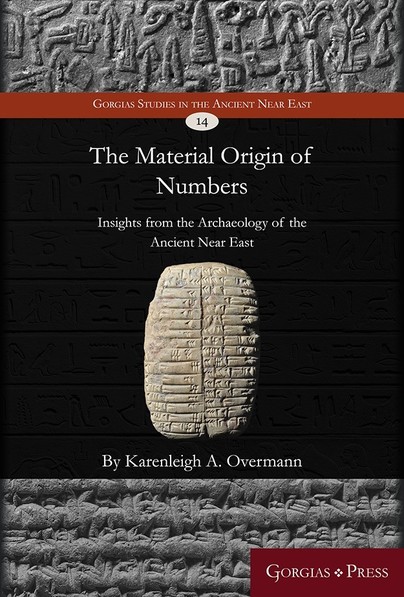
Format: Hardback
Pages: 310
ISBN: 9781463207434
Pub Date: 25 Sep 2019
Description:
The Material Origin of Numbers examines how number concepts are realized, represented, manipulated, and elaborated. Utilizing the cognitive archaeological framework of Material Engagement Theory and culling data from disciplines including neuroscience, ethnography, linguistics, and archaeology, Overmann offers a methodologically rich study of numbers and number concepts in the ancient Near East from the late Upper Paleolithic Period through the Bronze Age.
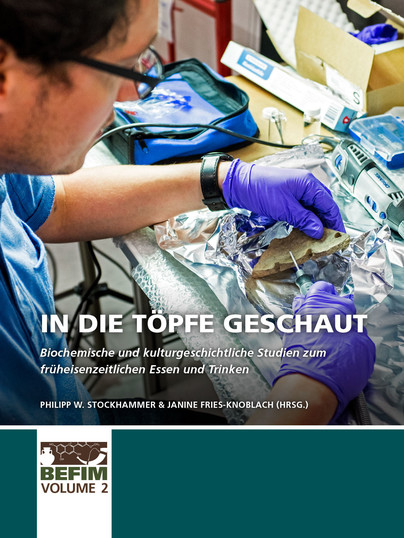
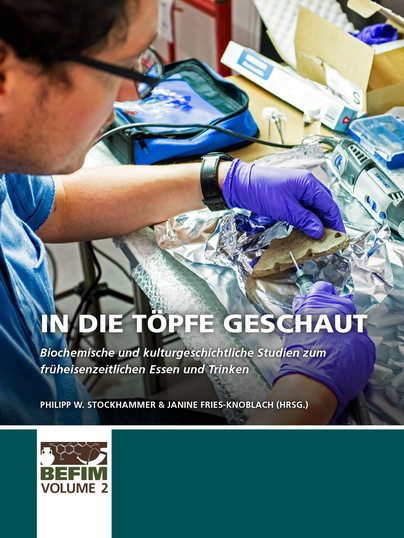
Pages: 330
ISBN: 9789088907708
Pub Date: 24 Sep 2019
Series: BEFIM
Illustrations: 100fc/10bw
Pages: 330
ISBN: 9789088907685
Pub Date: 24 Sep 2019
Series: BEFIM
Illustrations: 100fc/10bw
Description:
Abstract German: Band 2 der BEFIM-Reihe enthält sieben Beiträge des BEFIM-Teams und enger Kooperationspartner. Die Zwischenberichte aus Band 1 werden darin vertieft, abgeschlossen und in Gesamtinterpretationen eingebettet. Ein einleitender Artikel befasst sich einführungs- und überblicksartig mit der Aussagekraft von Biomarkern und Isotopenanalysen bei der Untersuchung alter organischer Reste.
Den Kern bilden drei Aufsätze, die den eigentlichen archäologisch-naturwissenschaftlichen Ergebnissen von BEFIM gewidmet sind. Der erste Beitrag bettet die Nahrungsrückstandsanalysen an Keramik aus den Altgrabungen (1950-85) sowie aus den jüngeren Ausgrabungen in der Vorburgsiedlung (2004-08) bzw. auf dem Plateau der Heuneburg (2015) in ihren archäologischen Kontext ein. Die Keramik aus relevanten Befundzusammenhängen erlaubt hierbei eine räumlich und zeitlich differenzierte Betrachtung bezüglich Ess- und Trinkgewohnheiten und Gefäßnutzung. Im zweiten Teil werden die Analyseergebnisse für lokale und importierte Keramik aus den alten, jüngeren und laufenden Grabungen auf dem und um den Mont Lassois mit Befundkontexten und formenkundlichen Aspekten verbunden. Auf diese Weise gelingt ein Vergleich des Gebrauchs unterschiedlicher Gefäßformen und gattungen in den verschiedenen Siedlungsbereichen. Als drittes werden die Ergebnisse der Nahrungsrückstandsanalysen zum Breisacher Münsterberg in ihrem archäologischen Zusammenhang präsentiert. Darauf folgt ein Aufsatz zur musealen Umsetzung der BEFIM-Ergebnisse im Landesmuseum Württemberg in Stuttgart. Den Abschluss bilden zwei geschlechtergeschichtliche Beiträge zur Frage von Alkohol in der Lebenswelt von Frauen in alten Kulturen Europas und des Nahen Ostens unter den Aspekten von Herstellung, Ausschank, Handel, Kulthandlungen und Konsum sowie zu Geschlechterklischees bei der Interpretation eisenzeitlicher Prunkgräber. Der Band richtet sich mit seinen teils generellen, teils speziellen Aufsätzen an ein breites akademisches Publikum von Universitäten, Museen und Denkmalpflege sowie an Studierende und interessierte Laien.Abstract English:Volume 2 of the BEFIM series contains seven papers by the BEFIM team and close co-operation partners. The interim reports of BEFIM 1 are enhanced, finalised, and integrated into overall interpretations. An introductory paper provides insights into and an overview of the potential of biomarker and isotopic analysis in studying ancient organic residues. The core of the book consist of three articles on the final archaeo-scientific results of BEFIM. The first one integrates the organic residue analyses (ORA) of pottery from the old excavations (1950-85) and recent excavations at both the Vorburg settlement (2004-08) and on the plateau (2015) of the Heuneburg into their archaeological contexts. The pottery from relevant find contexts allows for a spatially and temporally differentiated view of eating and drinking habits and vessel usage. The second paper combines the ORA results of local and imported pottery from early, younger, and current excavations on and around the Mont Lassios with excavation contexts and aspects of vessel shapes. By doing so, it becomes possible to compare the use of different vessel shapes and wares in each of the settlement zones. The third text presents the results of food residue analyses from Breisach-Münsterberg in their archaeological context. This is followed by an article on the museological implementation of BEFIM’s results in the Landesmuseum Württemberg in Stuttgart. The volume ends with two gender-historical contributions, one on the question of alcohol in the female sphere of life in ancient cultures of Europe and the Near East with regard to production, distribution, trade, ritual, and consumption, the other on gender stereotypes in the interpretation of ostentatious Iron Age graves. The volume with its partly general, partly specific papers aims at both a wide academic audience (universities, museums, heritage authorities) and at students and interested non-professionals.
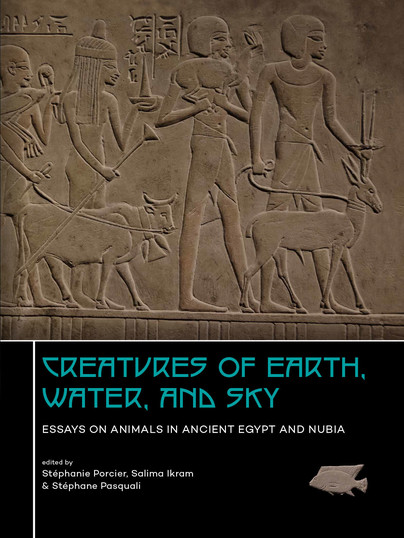
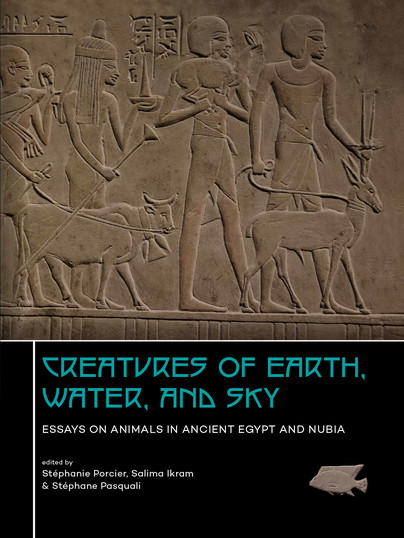
Pages: 310
ISBN: 9789088907715
Pub Date: 22 Sep 2019
Illustrations: 125fc/75bw
Pages: 310
ISBN: 9789088907722
Pub Date: 22 Sep 2019
Illustrations: 125fc/75bw
Description:
Ancient Egyptians always had an intense and complex relationship with animals in daily life as well as in religion. Despite the fact that research on this relationship has been a topic of study, gaps in our knowledge still remain. This volume presents well over 30 contributions that explore Human-Animal relationships from the Predynastic to the Roman period.
The essays cover topics such as animal husbandry, mummification, species-specific studies, the archaeology and economy of the animal cults, funerary practices, iconography and symbolism. The contribution of archaeometrical methods, such as DNA analyses, balms’ analyses, AMS dating, radiography, and 3D imaging, are also represented as these play a significant role in furthering our understanding of the human-animal relationship in Egypt. The range of subject matter and contributors are indicative of the importance of animals and the role that they played in ancient Egypt and Nubia, and emphasises the need for continued inter- and multidisciplinary studies on the subject. The research outlined in this volume has helped, for example, to better identify ways of sourcing the animals used in mummification, contributed to establishing the eras during which animal mummification became common, and highlighted new techniques for acquiring DNA. The fresh insights and diversity of topics makes the volume of interest for professionals (Egyptologists, (archaeo-)zoologists and historians), as well as those who are interested in Egyptology and in the relationship between humans and animals. ‘Creatures of Earth, Water and Sky’ is the result of the first international conference ever dedicated to animals in ancient Egypt and Nubia (the International Symposium on Animals in Ancient Egypt, ISAAE 1, June 1-3 2016, held in Lyon).
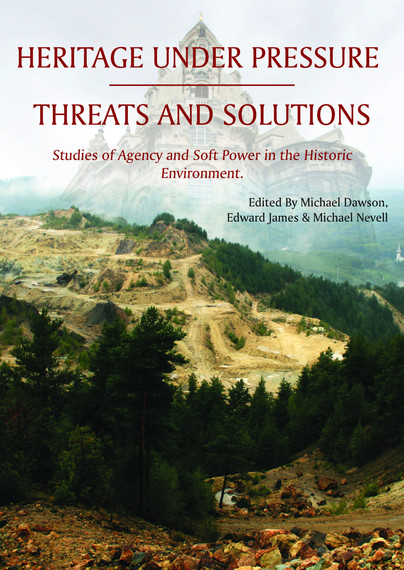
Format: Paperback
Pages: 336
ISBN: 9781789252460
Pub Date: 15 Aug 2019
Illustrations: 124 images
Description:
Heritage under Pressure examines the relationship between the political perspective of the UK government on 'soft power' and the globalising effect of projects carried out by archaeologists and heritage professionals working in the historic environment. It exemplifies the nature of professional engagement and the role of the profession in working towards a theory of practice based on the integrity of data, the recovery and communication of information, and the application of data in real world situations. Individual papers raise complex and challenging issues, such as commemoration, identity, and political intervention.
A further aim of the volume is to illustrate the role of professionals adhering to standards forged in the UK, in the context of world heritage under pressure. Papers also contribute to the emerging agenda developing as a result of the re-orientation of the UK following the Brexit vote, at once emphasising the global aspiration of the Uk’s professional archaeological body – the Chartered Institute for Archaeologists – in relation to the global reach of UK academic practice. By implication the volume also addresses the relationship between professional practice and academic endeavour. The volume as a whole contributes to the emerging debate on the authorised heritage discourse and provides an agenda for the future of the profession.
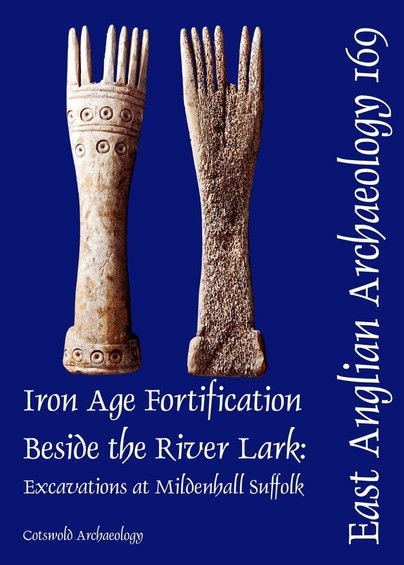
Format: Paperback
Pages: 200
ISBN: 9780955353482
Pub Date: 09 Aug 2019
Series: East Anglian Archaeology Monograph
Illustrations: 70
Description:
Excavations by Cotswold Archaeology at Mildenhall produced evidence for human activity from the Late Bronze Age to the medieval period. A Late Bronze Age waterhole backfilled with domestic refuse was excavated on the higher ground above the floodplain of the River Lark. The Middle Iron Age was a period of intense activity on the site, when a pair of massive ditches defined the eastern part of an enclosure, possibly built to dominate the crossing point of the River Lark.
A third ditch of comparable size may date to the Middle or Late Iron Age. Numerous pits were found inside the enclosure, and a pair of very large post-settings were located between the paired ditches. A possible focus for settlement beyond the excavated area was suggested by the greater density of pits towards the west. The ditches fell out of use before the Roman period when a farmstead occupied the higher ground. In this period the flood plain was utilised with a series of field ditches, although the area was prone to flooding in the later Roman period. Throughout the Saxon period, the higher ground was farmed and use of the flood plain was limited by the wet environment. The evidence suggests there was a process of deliberate land reclamation on the floodplain during the medieval period, after which the area was divided into fields. On the higher ground, a large ditch running north to south may have marked the medieval town boundary, but this association is uncertain. Excavated evidence from this period represented activities undertaken on the periphery of settlement, including crop-processing, animal husbandry, and iron-working. A well-preserved kiln base may have been used for the production of lime, using chalk quarried from the edge of the higher ground. There was a rapid decline in use of the area from the 14th century onwards, and it remained farmland until recent times. There was good preservation of environmental evidence from all periods, and the sizeable assemblages of animal bone and crop waste allowed comparisons to be made in farming practices over time. The assemblage of decorated Middle Iron Age pottery from the site is the largest found in the region to date.
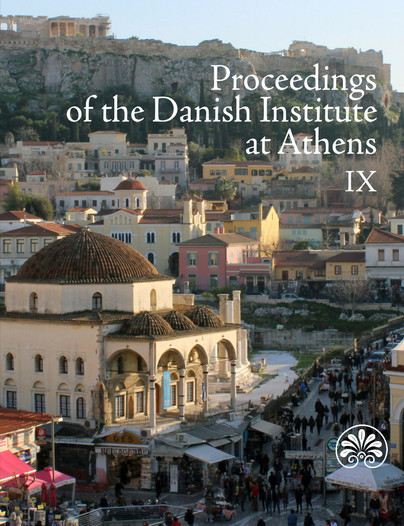
Format: Paperback
Pages: 205
ISBN: 9788771848182
Pub Date: 01 Aug 2019
Series: Proceedings of the Danish Institute at Athens
Description:
Proceedings of the well-esteemed Danish Institute in Athens conducting several archaeological excavations in Greece. This is the ninth volume of the journal. It includes articles on archaeology, art history, ancient and modern Greek history, philology and literature.






















